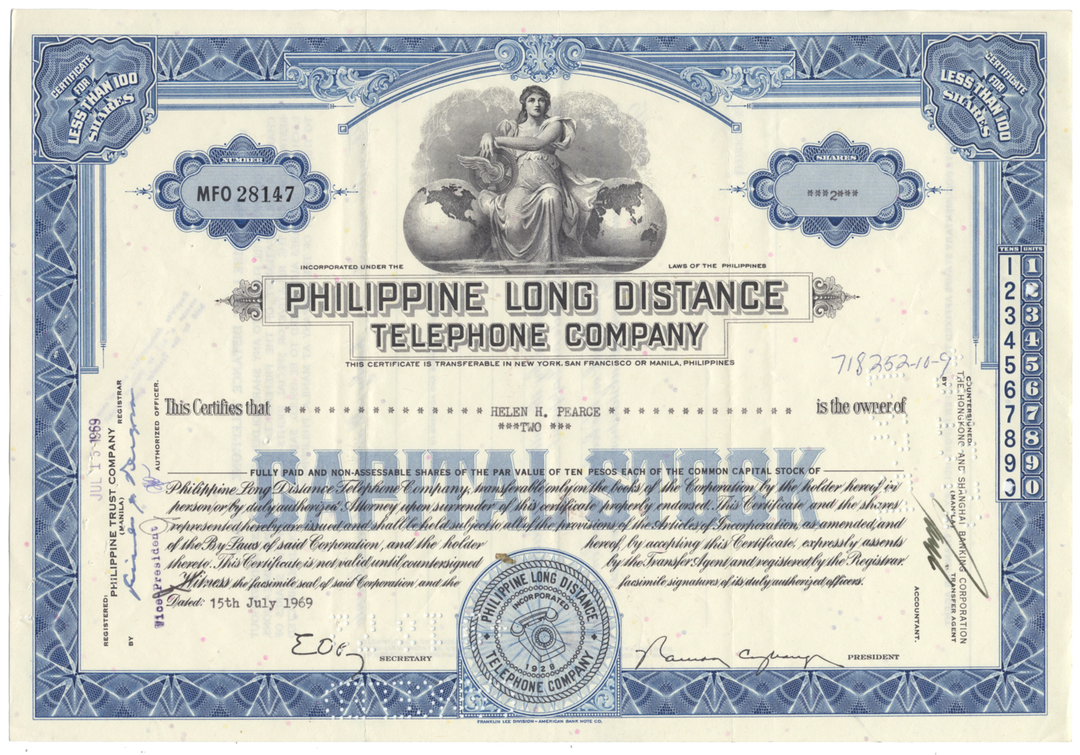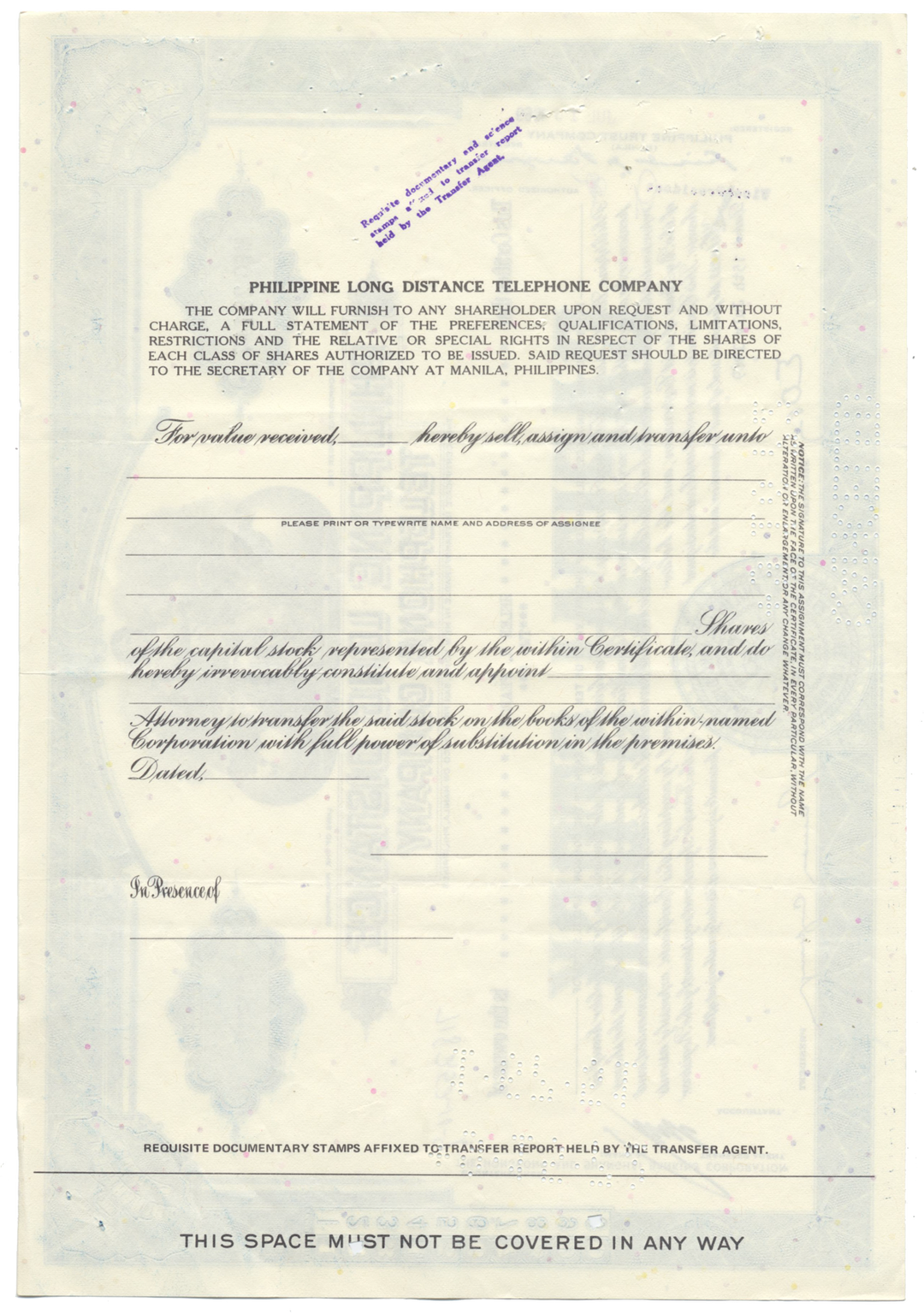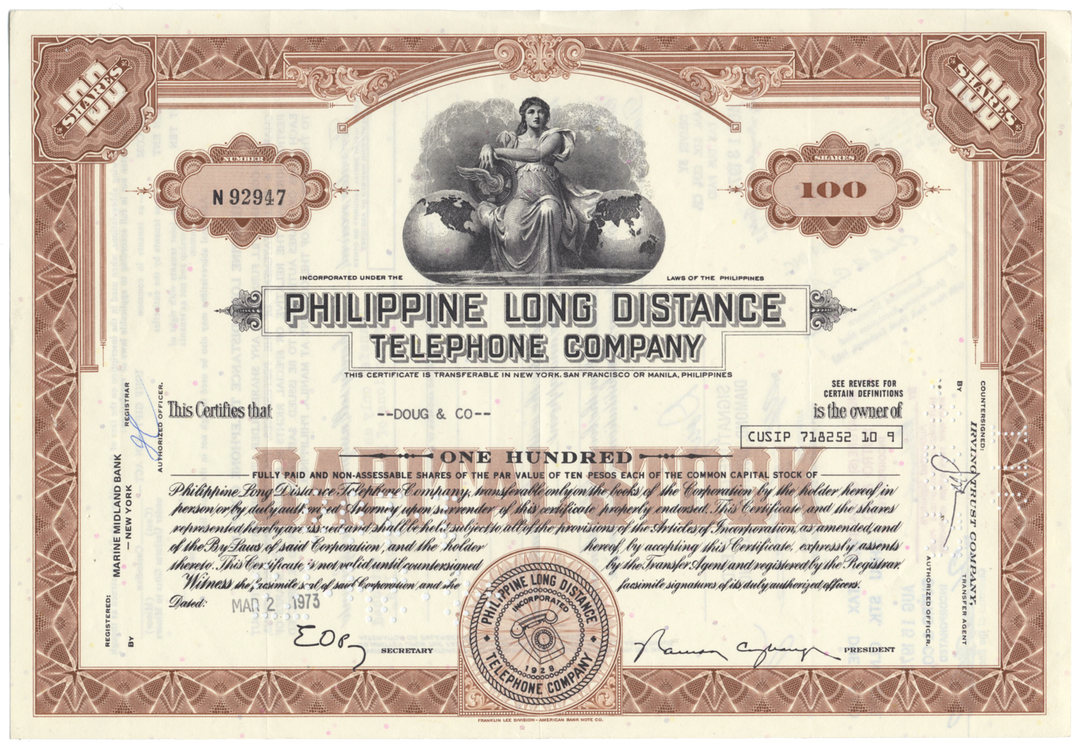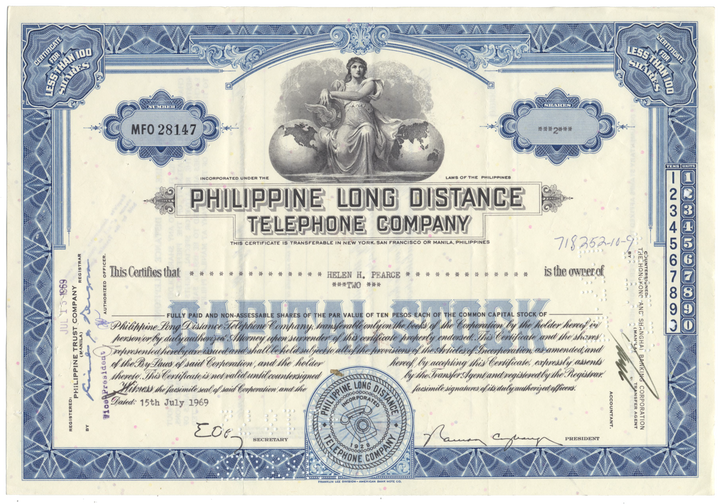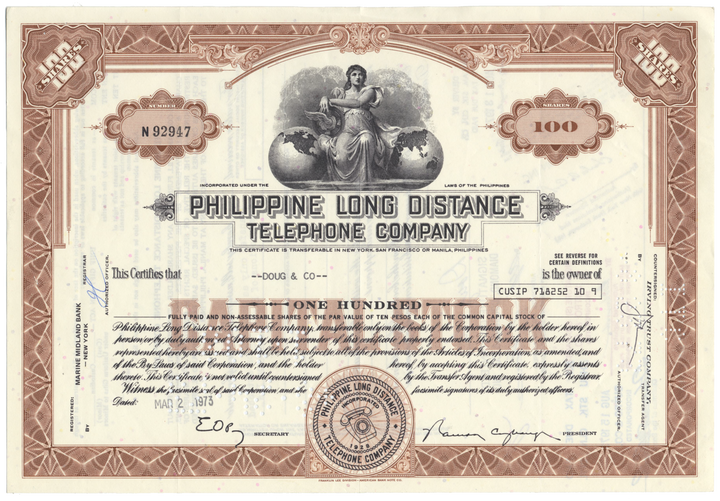Philippine Long Distance Telephone Company
- Guaranteed authentic document
- Orders over $75 ship FREE to U. S. addresses
Product Details
CompanyPhilippine Long Distance Telephone Company
Certificate Type
Capital Stock
Date Issued
1960's and 1970's
Canceled
Yes
Printer
Franklin-Lee Division, American Bank Note Company
Signatures
Machine printed
Approximate Size
12" (w) by 8" (h)
Images
Representative of the piece you will receive
Guaranteed Authentic
Yes
Additional Details
NA
Historical Context
PLDT was established on November 18, 1928, by a Philippine Government act. Philippine legislature and approved by then Governor-General Henry L. Stimson by means of a merger of four telephone companies under operation of the American telephone company GTE. Known as Act 3436, the bill granted PLDT a 50-year charter and the right to establish a Philippine telephone network linking major points nationwide. However, PLDT had to meet a 40-day deadline to start implementing the network, which would be implemented over a period of one to four years.
By the 1930s, PLDT had an expansive fixed-line network and for the first time linked the Philippines to the outside world via radiotelephone services, connecting the Philippines to the United States and other parts of the world.
Telephone service in the Philippines was interrupted due to World War II. At the end of the war, the Philippines' communications infrastructure was in ruins. U.S. military authorities eventually handed over the remains of the communications infrastructure to PLDT in 1947, and with the help of massive U.S. aid to the Philippines during the 1940s and 1950s, PLDT recovered so quickly that its telephone subscribers outpaced that of pre-war levels by 1953.
On December 20, 1967, a group of Filipino entrepreneurs and businessmen led by Ramon Cojuangco took control of PLDT after buying its shares from GTE. The group took control of PLDT's management on January 1, 1968, with the election of Gregorio S. Licaros and Cojuangco as chairman and president of PLDT, respectively. A few months later, PLDT's main office in Makati (known today as the Ramon Cojuangco Building) was opened, and PLDT's expansion programs begin, hoping to bring reliable telephone services to the rural areas. It was also during that time that PLDT was able to use Intelsat II F-4 communications satellite to beam international events such as the Apollo 8 mission and the funeral of Robert F. Kennedy in 1968.
PLDT was permitted to operate during Martial Law. During the 1970s, PLDT was nationalized by the government of then-President Ferdinand Marcos and in 1981, in compliance of then existing policy of the Philippine government to integrate the Philippine telecommunications industry, purchased substantially all of the assets and liabilities of Republic Telephone Company, becoming the country's telephone monopoly. Under this monopoly, service expansion were severely curtailed or practically nonexistent. In the Martial Law years people would apply for phone service only to wait for years and years on end behind an impossibly long application backlog. It was not unheard of for people and small businesses back then to barter for a single telephone line in the black market for tens of thousands of pesos. The incumbent Singaporean Prime Minister Lee Kuan Yew referred to the situation when visiting the Philippines during the term of President Fidel V. Ramos. He said, albeit in jest, “In the Philippines, 95% of the population has no telephone, while the remaining 5% are waiting for that dial tone.”
After President Marcos was overthrown in 1986, the company was re-privatized and Cojuangco's son, Antonio "Tonyboy" O. Cojuangco, Jr. became chief executive. By 1995, with the passage of the Telecommunications Act and the subsequent deregulation of the Philippine telecommunications industry, the company has been de-monopolized.
In 1992, PLDT partnered with AT&T to expand its services into rural communities; including USA Direct Roving Van Service, a mobile van equipped with cellular phones, to provide toll service to some previously unserved rural communities; point-to-point international digital leased line service; payphone services; and magnetic prepaid telephone cards. By 1997, the company, through Mabuhay Satellite Corporation, launched the Philippines' first local communications satellite Agila II (It was later divested to Asia Broadcast Satellite in 2009).
In April 2016, the company, then known as the Philippine Long Distance Telephone Company, dropped the "long distance telephone" from its corporate name and was renamed PLDT Inc.
Related Collections
Additional Information
Certificates carry no value on any of today's financial indexes and no transfer of ownership is implied. All items offered are collectible in nature only. So, you can frame them, but you can't cash them in!
All of our pieces are original - we do not sell reproductions. If you ever find out that one of our pieces is not authentic, you may return it for a full refund of the purchase price and any associated shipping charges.






